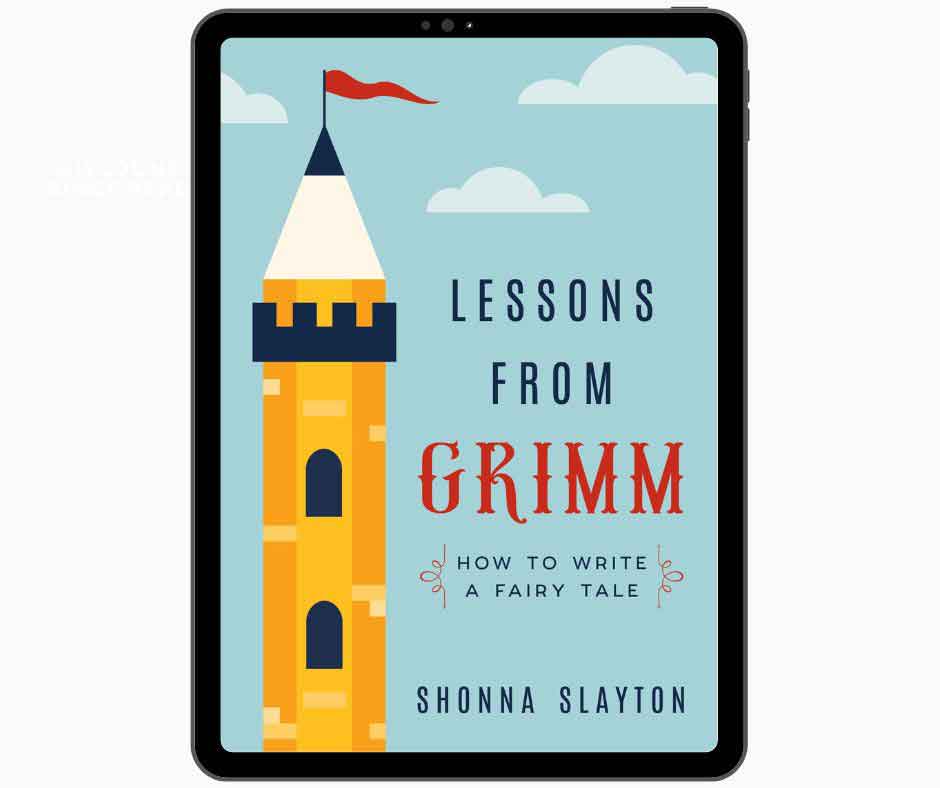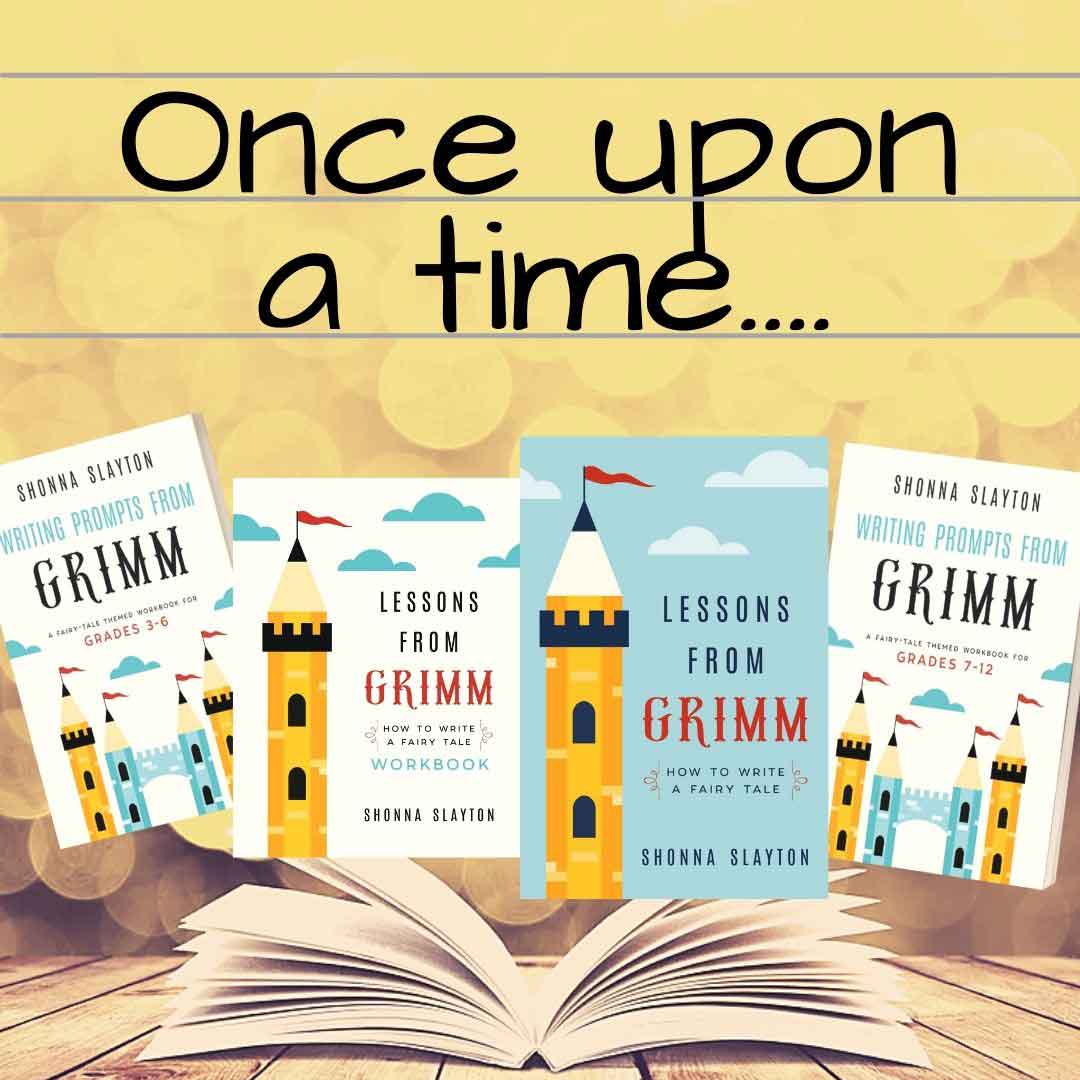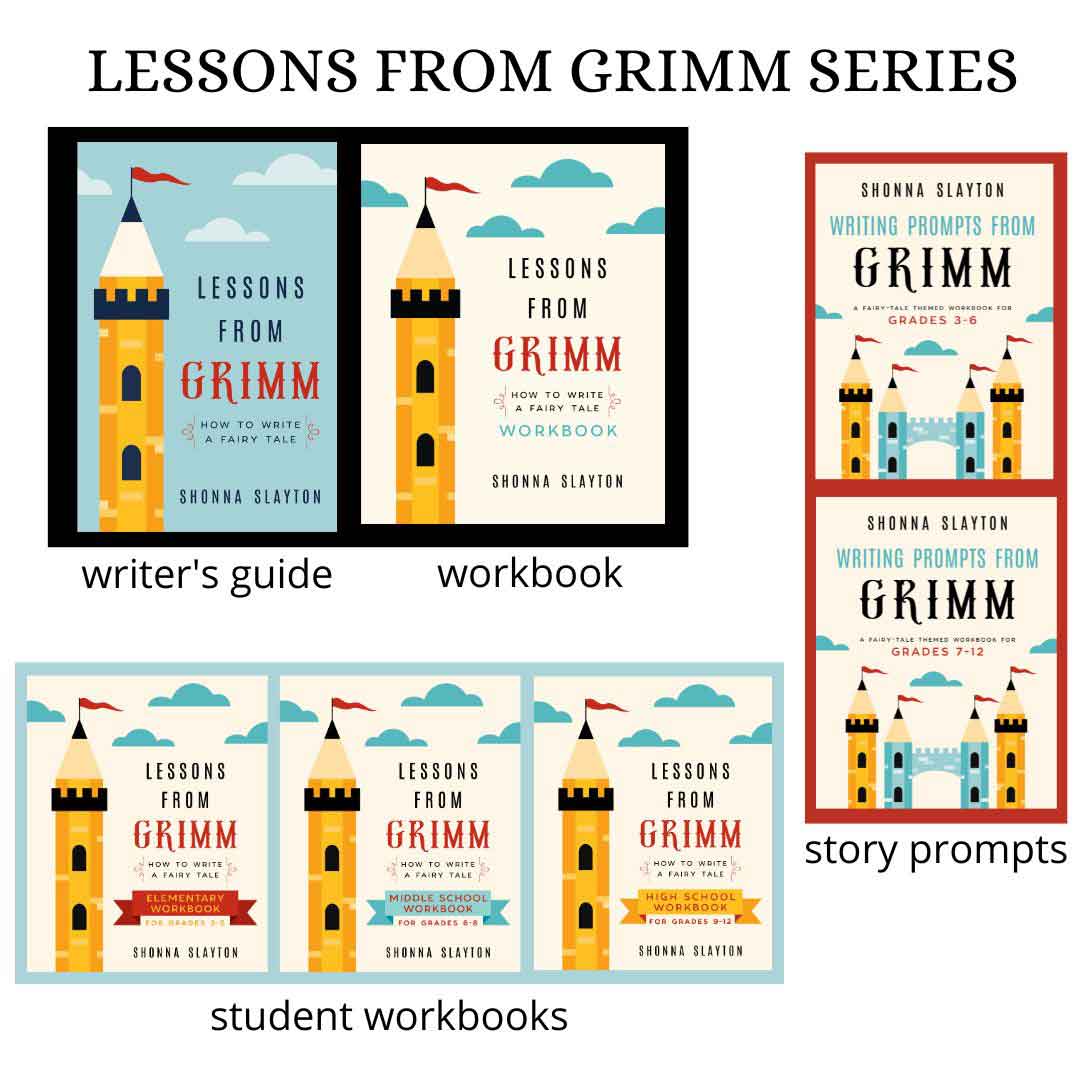Lessons From Grimm (Lessons From Grimm Series, Book 1) | E-book
Lessons From Grimm (Lessons From Grimm Series, Book 1) | E-book
⭐⭐⭐⭐⭐ 38 five-star reviews on Amazon
Couldn't load pickup availability
Uncover the fairy tale secrets that made the Grimms famous.
Are you interested in writing fairy tales? Let me help you!
I spent a year blogging through Grimms' fairy tales looking for patterns that have made these classic tales so endearing. With this guide at your side, you can quickly learn these techniques for yourself and apply them to your writing.
You'll find plenty of examples from both well-known and more obscure tales and will come away with a fresh perspective on Grimms' fairy tales. Your imagination will explode with ideas for writing your own stories.
In Lessons from Grimm, you'll study how the Grimms handle key elements of character, setting, plot, fairy tale magic, and theme.
- quickly brainstorm ideas
- streamline the creative process
- create endearing fairy tale characters
- build on time-tested plots and themes
- write a better fairy tale
Bonus! Includes comprehensive lists of characters, settings, plots, romance tropes, magic objects and more, saving you hours and hours of research time.
Get Lessons From Grimm today and get started.
This Lessons from Grimm book (affectionately called the blue book) is the foundation of the series. Workbooks can be purchased separately, or look the for the bundle for the whole collection.
Share



Read A Sample
Table of Contents
INTRODUCTION
1. ONCE UPON A TIME… GENRE
2. THERE WAS A… CHARACTER
Character Archetype
Protagonists
Antagonists
Side Characters
Magical Helpers
Fairy Godmothers
Supporting Cast of Fairy Tale Beings
Fairy Tale Families
3. WHO LIVED IN A… SETTING
Six Ways to Use Setting
Setting: Enchanted Castles
Setting: Forest Dwellings
Setting: Roads
Setting: Trees in Grimms' Orchard
Setting: Wells
Setting: Towers
Setting: Mountains
4. AND HAD A PROBLEM… PLOT
Fairy Tale Plot Structure
The Fairy Tale Synopsis
Identifying Plot Tropes
Romance in Fairy Tales
Plot Twists
Test of Three
Escalation: How to Make Things Worse
Beginnings and Endings
5. MAGIC INTERVENES / INTERFERES
Enchantments: Curses and Blessings
Magical Objects
6. AND EVERYONE LEARNED… THEME
Examples of Theme
A Clash of Theme
7. FAITH AND FAIRYTALES
Faith of the Grimms
Allegory, Allusion, and Spiritual Awareness
People from the Bible
Biblical Themes
8. PUTTING IT ALL TOGETHER
An Exercise with Tropes
Choosing a Tale for a Retelling
Choosing a Title
How to Stand out: A Touch of Whimsy
The End
Acknowledgements
Sign up for Offer
Appendix: History of Grimms' Fairy Tales
Appendix: ATU Index
Appendix Lists 1: Characters
Appendix Lists 2: Settings
Appendix Lists 3: Plots
Appendix Lists 4: Romance Tropes
Appendix Lists 5: Horror
Appendix Lists 6: Magical Objects
Appendix Lists 7: Theme
Chapter 1
Introduction
At first blush, Grimms’ fairy tales are some strange stories. Adults plot against children. A knocked-off head can be reattached with a life-giving root. And the amount of rust on a knife will tell you if your brother is alive… or mostly dead.
Unusual they may be, but these fairy tales have stood the test of time. There are two hundred and ten fairy tales in Grimms’ final collection. They’ve been enjoyed by generations of readers and sparked many a writer’s imagination.
Today, we can use these stories to master the basics of storytelling. After all, when Grimms’ fairy tales are boiled down to their simplest components, we have a pattern:
Once upon a time there was a character who lived in a setting and had a problem (plot). Fairy tale magic intervened/interfered and everyone learned a lesson (theme).
In Lessons from Grimm we’ll do a deep dive into each of these components to study how the Grimms handled genre, character, setting, plot, magic, and theme. We’ll make note of repeated patterns that we can use in our own stories so we can become better writers. Whether you are working on a retelling, an adaptation, or a brand-new fairy tale, there is something you can learn from these master story tellers.
Who Am I?
I’m an author known for my Fairy-Tale Inheritance Series of young adult novels, particularly Cinderella’s Dress. I’ve used fairy tales to teach writing to children, teens, and adults in my roles as an author, a homeschool educator, and a writer-in-residence at the library.
Having worked with the most popular fairy tales (Cinderella, Snow White, Sleeping Beauty, Beauty and the Beast, The Little Mermaid), I wanted to explore the lesser-known tales, and so I went to the well. Of all the fairy tale collections, Grimm is by far the most well-known, so this German collection seemed like a great place to start. By the way, do you know what’s at the bottom of a well? Grimm can tell you, and you’ll find out later in this book.
How to Use This Book
If you are starting from scratch: Maybe you have a smattering of ideas about what to write, but nothing fully formed. Great! Keep a notebook handy and get ready to brainstorm. As you learn more about the Grimms’ fairy tales, inspiration can strike at any moment, and you’ll want to capture those thoughts before they flitter away. You’ll learn about the fundamentals of storytelling as used by the Grimms and how all those pieces fit together. The appendices at the back of this book list hundreds of tropes to give you more ideas.
If you already have a partial or first draft: Are you already deep in the fairy tale forest and looking for some tips on how to make your story better? The Grimms can help. As you work through each section, stop and analyze the work you’ve already written. Use the exercises to strengthen your fairy tale based on these timeless techniques.
If you are a creative writing teacher: While not written as a teacher’s manual, these pages can help you walk your students through the major elements that make up a fairy tale. Each section contains examples from popular and lesser known tales. Tales filled with adventure, romance, and derring-do. The questions in the exercises at the end of each section can be used to help drive classroom discussion.
A few more things…
Have a copy of Grimms’ complete fairy tales on hand. That way, when I mention a tale, you can read for more details. You can find all of the stories online. Go to my website for an updated list of resources.
ShonnaSlayton.com/LessonsFromGrimmResources/
A brief word on translations and copyright. The original German versions of Grimms’ fairy tales are in the public domain, as are many of the early translations.
The most complete and accessible translation in the public domain is from Margaret Hunt, translated in 1884 under the title Household Tales. Recent translations are still under copyright.
For clarity’s sake, when I quote a passage, I’m using Margaret Hunt’s translation and changing out the thee’s and thou’s for modern ears. I also left in the excess commas and sometimes mention the modern titles of the stories.
Note: The companion workbook Lessons from Grimm Workbook provides guided space for you to brainstorm and plot out your own fairy tales. It also contains a plot chart and pages for drawing maps. The Lessons from Grimm workbooks designed for students are adjusted for grade level and complexity. For extra inspiration, there is also a series of writing prompt workbooks based on Grimms’ tales. Be sure to check those out.
Now. Shall we begin?

Meet the author:
SHONNA SLAYTON SHONNA SLAYTON is the author of the Fairy-tale Inheritance Series of young adult novels, beginning with Cinderella’s Dress.
She edited curriculum for an education company before homeschooling her own children using literature-based whole book learning.
She’s taught writing using fairy tales in school classrooms and workshops, as well as in public libraries as a writer in residence.
Instead of seeing her in person, you can get the Lessons from Grimm Series which includes a writer’s guide and workbooks for writers to learn fiction techniques through fairy tales.
Happy writing!
MORE WRITING BOOKS FOR YOU:
Learn how to write fairy tales by studying the Brothers Grimm.
-
Lessons from Grimm Elementary Workbook (Lessons from Grimm Series) | PDF
Regular price $12.99 USDRegular priceUnit price / per$12.99 USDSale price $12.99 USD -
Lessons from Grimm Complete Collection | PDF and Ebook
Regular price $49.99 USDRegular priceUnit price / per$83.93 USDSale price $49.99 USDSale -
Lessons from Grimm Middle School Workbook (Lessons from Grimm Series) | PDF
Regular price $13.99 USDRegular priceUnit price / per$13.99 USDSale price $13.99 USD -
Writing Prompts From Grimm: Grades 3-6 (Lessons From Grimm Series) | PDF
Regular price $4.99 USDRegular priceUnit price / per$7.99 USDSale price $4.99 USDSale
FAQs
Is there a reading order?
For the Fairy-tale Inheritance Series, only the Cinderella books go together (read DRESS first). The rest of the series are standalone books that can be read in any order. Enjoy!
How do I get my e-book?
After purchase, you'll be sent an email from Bookfunnel with a download link and instructions. They keep track of orders based on your email, so it's best to use the same email for all your book purchases.
You have 14 days to download your book. Download all your purchases at once so you don't forget!
How can I read my e-book?
You can read to your e-book via the free Bookfunnel app on your preferred device (easiest way as it's automatically set up for you) or follow their instructions to load the files to your preferred device without using their app. You can read on a phone, tablet, e-reader, or computer.
What is your return policy?
We have a 14 day return policy on digital products.
What if I forget to download my book?
If your download link says it's expired, simply follow the instructions on that page to get a new download link.







